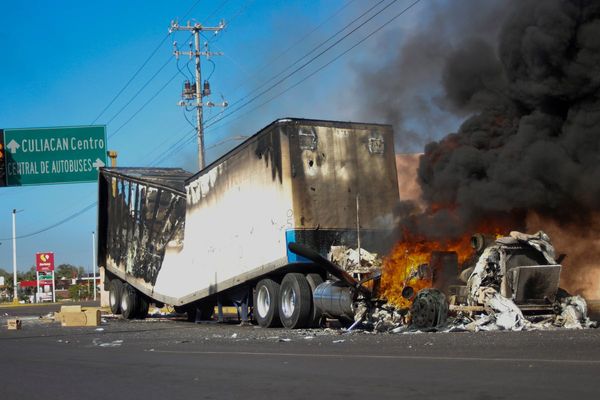
Inventory management is a challenge in No Man’s Sky Next. When the game begins you have a Starship with 15 inventory slots and a 24 slot Exosuit. Three Exosuit and five Starship slots are taken with tools like the Mining Beam and Launch Thruster leaving 21 open slots in the Exosuit and 10 in the Starship. They fill up quickly. The inventory crunch is even worse than it may originally appear because access to the Starship is lost when you move a relatively short distance away while exploring a planet on foot.
The problem is exacerbated by the need to constantly recharge mining tools and the systems in the Exosuit that keep you alive on planets with hostile environments, which is just about all of them. Some of the elements needed for charging are abundant and easy to find on most planets but stopping to harvest them every time they’re needed is an annoyance. It’s better to devote some of your inventory space to carrying a stock of the most frequently needed elements with you.
Inventory management continues to be a challenge when you’re in the Starship because you need both elements and crafted items to power the ship’s propulsion systems. For example, you can’t lift off a planet’s surface if the Launch Thruster doesn’t have fuel. The fuel has to be crafted from an element and another crafted item which needs a different element to make. If the needed elements aren’t in your inventory, you have to leave the ship to find and harvest them.
Here’s a breakdown of the elements needed to charge your tools and power your ship early in No Man’s Sky Next. Keeping this information in mind can help you make efficient use of your inventory space depending on what it is you’re trying to accomplish.

The Micro-tool
The Micro-tool doesn’t have any slots that can be filled with the elements you harvest or the components you craft but it contains the Mining Beam and Terrain Manipulator which are constant element drains.
The Mining Beam is charged with Carbon, Condensed Carbon or Phosphorus. Carbon is found in trees and plants and is easy to locate and harvest on most planets. Condensed Carbon can be harvested from harder-to-find crystals or refined from simple Carbon. Phosphorus is found on scorched planets.
Carbon is so easy to find you’re rarely in danger of being stranded without it. Ho, the Mining Beam gets so much use that it’s worth devoting an inventory slot to carbon when you’re working on a planet’s surface. A slot can hold 250 Carbon.
The Terrain Manipulator is charged with Ferrite Dust, Pure Ferrite or Magnetized Ferrite. Ferrite Dust is found everywhere in most minerals (rocks). Pure Ferrite can be harvested from mineral deposits and some large rocks. It’s also a secondary element in some minerals and can be refined from Ferrite Dust. Magnetized Ferrite can be refined from Pure Ferrite.
Ferrite Dust is even easier to find than Carbon. If you’re digging up buried items or harvesting resource deposits, devoting an inventory slot to Ferrite Dust makes using the Terrain Manipulator more convenient. A slot can hold 250 Ferrite Dust. Otherwise, there’s no real need to carry a stock of Ferrite in your Exosuit. It’s usually easy to find when you need it.

The Exosuit
Exosuit inventory space is precious when you’re out on a planet and away from your ship. The elements you need to work, the elements you harvest and the things you find all have to fit in your Exosuit. It can be a constant challenge.
The Exosuit has a cargo hold in addition to its main inventory. Each of these containers reach 48 slots when fully maxed out. That may sound like a lot early in the game, but keep in mind that the cargo hold doesn’t become available until later and expanding the Exosuit’s main inventory can be a slow and expensive process.
The Exosuit holds the Life Support and Hazard Protection systems. Both are essential to staying alive on planets with hostile environments.
Hazard Protection can be charged with Sodium, Sodium Nitrate, an Ion Battery or an Advanced Ion Battery. Plants that are easy to see at a distance because they have a golden glow are the most readily available source of Sodium. Sodium can also be found as a secondary element in some minerals and in large resource deposits. Sodium Nitrate can be harvested from yellow crystals if you have the Advanced Mining Laser upgrade for the Mining Beam. It can also be refined from Sodium. Ion Batteries can be found or crafted.
Life Support can be charged with Oxygen, an Oxygen Capsule, Life Support Gel or Dioxite. The main source for Oxygen is plants that have a red glow. Oxygen can also be found as a secondary element in some plants. Dioxite can be found in resource deposits and as a secondary element in some minerals on frozen planets. Oxygen Capsules and Life Support Gel are crafted items.
The plants that are the main sources for both Sodium and Oxygen are not rare but not nearly as convenient as Carbon and Ferrite Dust. It’s a good idea to reserve resource slots in the Exosuit for each of these elements because you can die without them.

The Starship
Starship inventories come in many sizes ranging from your starter ship’s 15 to a maximum of 48. The only way to increase ship inventory is to get a new ship. If you find a crashed ship, you can have it for free but repairing it is usually prohibitively expensive and time consuming. You can also pick up almost any ship you see at a space station or trading post by either buying it at full price or including your own ship in trade to reduce the cost. Be aware that if you trade ships, everything in your ship goes with the ship. Whatever you don’t sell or move to a different inventory is lost.
Most of the ship’s propulsion systems rely on both elements and crafted items for fuel and you need additional elements to make the crafted items. Needless to say, keeping your ship fueled can be a headache.
The Pulse Engine is the exception to the rule because refueling doesn’t demand crafted items. It’s fueled by either Tritium or Pyrite. Tritium can be mined from asteroids that are easy to find around planets and space stations. Pyrite can be found in resource deposits and as a secondary mineral on desert planets.
Tritium is easier to find than Pyrite but mining it involves blasting asteroids with your ship’s weapons and asteroids are made of either Tritium, Gold or Silver. Mining for Tritium invariably involves filling inventory slots with the other two elements whether you want to or not.
It’s a good idea to devote at least one inventory slot in the ship to either Pyrite or Tritium so you don’t run out when using the hyperdrive to zip around a star system. An inventory slot can hold 250 Pyrite or 500 Tritium. Pyrite is more efficient than Tritium in fueling the Pulse Engine.

The Launch Thruster demands constant awareness because it’s needed to lift the ship off the ground. If you run out of fuel, you’re stuck where you are. The Launch Thruster is powered by either Uranium or Starship Launch Fuel.
Uranium is found in resource deposits and as a secondary mineral on radioactive planets. It can also be found in Metal Fingers on planets that aren’t radioactive.
Starship Launch Fuel is made from Di-hydrogen and Metal Plating. Di-hydrogen is mined from blue crystals that are common on almost every planet. Metal Plating is made from Ferrite Dust.
It’s a good idea to devote a slot in your ship’s inventory to keeping a ready supply of fuel for the Launch Thruster. Each slot holds 20 Starship Launch Fuel. If you can afford the space, you can also stack 5 Metal Plating in a slot which will free you from having to leave your ship and hunt for elements if you run out of fuel and have some Di-hydrogen on hand. Do a crafting run to make Starship Launch Fuel when you get low avoids the hassle of making the fuel when you need it.
The Hyperdrive is powered by a Warp Cell which is the most involved fuel to make. Fortunately, you need it much less often as it’s only used when you warp to a new star system.
Warp Cells are made from Antimatter and an Antimatter Housing. Antimatter is made from Chromatic Metal and Condensed Carbon. Chromatic Metal is refined from either Copper, Cadmium, Emeril or Indium. Copper is the most readily available and can be found in resource deposits on planets orbiting yellow stars. See the above section on the Mining Beam for information about Condensed Carbon. An Antimatter Casing is made from Ferrite Dust (see the Terrain Manipulator) and Oxygen (see Life Support).
Making Warp Cells from scratch demands too much inventory space given over to storing the needed elements. Warp Cells, Antimatter and Antimatter Casings can all be stored in stacks of five. A Starship slot devoted to Warp Cells saves a lot of inventory space. If you can spare the room, stacking Antimatter in a slot can also be convenient because Antimatter is used for many things.

Conclusion
It’s unlikely that you’ll have enough inventory space to always have stacks of all the elements and crafted items you need. Choices have to be made. If you’ve read through to this point (or spent much time playing the game) you know that deciding what to carry and what to gather when you need it is complicated and it often depends on what you’re doing at the time. Here’s a summary of recommendations based on the information above.
- Devote inventory slots in the Exosuit to Carbon, Sodium and Oxygen.
- Add a slot for Ferrite Dust if you’re going to be doing a lot of work with the Terrain Manipulator.
- Devote an inventory slot in the Starship to either Tritium or Pyrite. Pyrite is more efficient, but Tritium is easier to find.
- Reserve Starship slots for Launch Fuel and Warp Cells. When either stock gets low, do a crafting run to fill it back up.
- Modify your inventory plan if you come across a good source for a hard-to-find alternative for the elements you typically use.
I hope you found this article useful. If you store things differently, please share your ideas in the comments.
If you’re interested in No Man’s Sky Next, here are some other articles you might enjoy.







